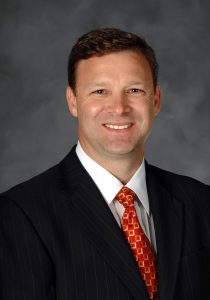How Florida Power & Light is investing in infrastructure to increase efficiency
Eric Silagy President & CEO – Florida Power & Light Company

Eric Silagy in Juno Beach on March 10, 2008.
What have been the most important milestones for Florida Power & Light Company (FPL) in 2016?
This past year, in Miami, we invested more than $50 million in transmission and distribution in the Downtown area. The Miami construction boom has been tremendous, but it has also created a lot of challenges. A lot of planning needs to be done in advance to be able to meet the needs of the new developments. That’s why we try and work really closely with the developers, the city and the county to be able to understand what is going to be happening in the next six to 12 months – and even beyond– so we can anticipate and execute the proper investments in an orderly and efficient way. We have to find the right balance so we can have growth that is done in a way that is the least impactful to residents as possible, but also provides future opportunities for those who live and work in Miami. Another factor that we need to take into account is being prepared for hurricanes. It is very important that we continue to be able to respond quickly because otherwise, the economic damages could be far worse than the physical ones. For example, electric cranes operate PortMiami, meaning they need electricity to operate reliably. If the power goes out due to a storm, the port stops operating, which is why we made important investments to strengthen the infrastructure of the port.
What has been the impact of the smart grid technology in Florida’s electric grid?
We have one of the smartest grid systems in America. Smart grid technology has completely changed the way we see and operate the electric grid. All customers have smart meters, except a small handful that specifically requested not to have them. We have invested a significant amount of resources in technology that now allows us to anticipate possible problems with the grid. The electric grid sends us signals about how it’s operating in real time, showing us what possible failures we could experience so that we can correct them before a problem occurs. We are also using mini-drones to identify certain problems that arise. Once the drone shows us what exactly the problem is, we are able to go in with the correct resources to fix it. This allows us to approach day to day issues proactively instead of reactively, saving a lot of time and money, which helps to keep the electricity bills low. On average, we have been investing in Florida around $3 billion per year over the last six years; in 2016, we invested more than $3.5 billion, and in 2017 we plan to invest more than $5 billion. Yet, in the last 10 years, our bills to customers have gone down 14 percent – primarily because the efficiency gained through technology and process improvements provides greater benefits than the cost to invest in it.
